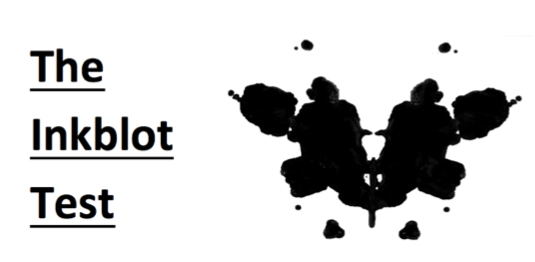
To call the images 'inkblots' is not quite accurate – Rorschach carefully drew each one, with the specific aim of diagnosing schizophrenia. The test itself consists of 10 cards with bilaterally symmetrical images, five black and white, and five with color. They say that the test, when used alongside more formal standardized assessments, can help provide more nuanced pictures of subjects' anxieties and fantasies, their ability to handle stress, their sexual proclivities, and, overall, how they structure their thoughts and perceptions. Proponents of the Rorschach say that the subject's responses can be scored reliably and that it provides important information – such as a person's likelihood of committing suicide – that cannot be gained through other tests. Juries use it in their decisions to recommend death sentences.

Prosecutors use the test when deciding whether or not to bring sexual abuse charges. Parole boards take prisoners' Rorschach responses into account when deciding whether or not to grant them freedom. Perseverance For this Ukrainian veteran, why Russians fight is still a puzzle A 1999 study found that it was used in 28 percent of evaluations of emotional trauma. Now, let's talk about why you responded the way you did.įriday marks the 129th birthday of Hermann Rorschach, the Swiss psychiatrist and psychoanalyst, and Google is marking the occasion with an interactive homage to his famous 'inkblot' test.ĭevised in 1921 and rivaling perhaps only the Stanford-Binet IQ test as psychology's most well-known assessment, the Rorschach test has endured, notably in areas where the science of the mind intersects with the justice system, in situations where people have an incentive to present themselves a certain way.įor instance, a 1997 study found that it was used in 48 percent of child custody cases in the United States. Is that a butterfly? Or is it a woman holding a pair of scissors?ĭo you perceive images of movement, of aggression, of abandonment? How long does it take you to respond? Do you focus on part of the image or take in the whole thing? Did you ask if it was okay to turn the card upside down? Are your responses exuberant or restrained? Every issue matters deeply to someone, from the pots of gold available in reshuffling in athletic conferences, to the urgency of finding housing to keep students from being homeless.I am honored to be able to present some of these issues to you in the Monitor’s pages, and I hope along the way that you suggest a story or two to me. We will talk about how we can best present these stories to the public. A war on woke education finds new targets daily.With all of this before us, I will travel to California this week to gather with reporters at the Education Writers Association conference on higher education. Financially strapped universities are cutting majors and disciplines.

Controversial faculty appointments have been made and rescinded. National security concerns have pushed some campuses to ban TikTok on their public Wi-Fi. Legacy admissions for scions of wealthy or well-connected alumni at some of those same schools were challenged as a result of that same ruling, sending shivers of nervousness to privileged people, too.Artificial intelligence threatens to take away the discovery process of young people studying and figuring out problems on their own by giving them the words to craft would-be research papers.

Issues important to higher education seem endless.The United States Supreme Court ended race-based admissions in June, which I’m sure made millions of teenagers of color around the country and the world anxious about whether they would get accepted into dream schools.


 0 kommentar(er)
0 kommentar(er)
